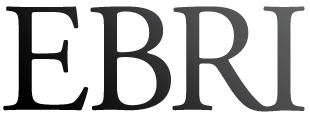Summary
• Asset levels growing: In 2012, there was $17.8 billion in health savings accounts (HSAs) and health reimbursement arrangements (HRAs), spread across 11.6 million accounts, according to data from the 2012 EBRI/MGA Consumer Engagement in Health Care Survey, sponsored by EBRI and Matthew Greenwald & Associates. This was up from 2006, when there were 1.3 million accounts with $873.4 million in assets, and 2011, when 8.5 million accounts held $12.4 billion in assets.
• After leveling off, average account balances increased: After average account balances leveled off in 2008 and 2009, and fell slightly in 2010, they increased in 2011 and 2012. In 2006, the average account balance was $696. It increased to $1,320 in 2007, a 90 percent increase. Account balances averaged $1,356 in 2008 and $1,419 in 2009, 3 percent and 5 percent increases, respectively. In 2010, average account balances fell to $1,355, down 4.5 percent from the previous year. In 2011, average account balances increased to $1,470, a 9 percent increase from 2010. It increased to $1,534 in 2012, a 4 percent increase.
• Total and average rollovers increase: After declining to $1,029 in 2010, average rollover amounts increased to $1,206 in 2011 and remained there in 2012. Total assets being rolled over increased: $9.7 billion was rolled over into HSAs and HRAs in 2012, up from $6.8 billion in 2011. The percentage of individuals without a rollover was 11 percent in 2012.
• Healthy behavior does not mean higher account balances and higher rollovers: Individuals who smoke have more money in their accounts than those who do not smoke. In contrast, obese individuals have less money in their account than the nonobese. There was very little difference in account balances by level of exercise. Very small differences were found in account balances and rollover amounts for individuals who used cost or quality information, compared with those who did not use such information. However, next to no relationship was found between either account balance or rollover amounts and various cost-conscious behaviors.
• Differences in account balances: Men have higher account balances than women, older individuals have higher account balances, account balances increase with household income, and education has a significant impact on account balances, independent of income and other variables.
• Differences in rollover amounts: Men rolled over more money than women, and older individuals had higher rollover amounts than younger individuals in 2012. Rollover amounts increased with household income and education, and individuals with single coverage rolled over a slightly higher amount than those with family coverage in 2012.

